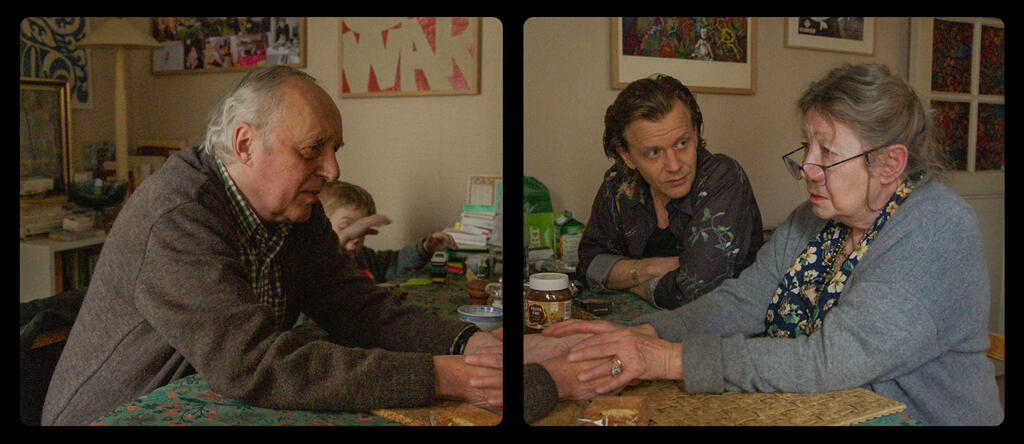The definition of a vortex is a volume of rotating water, which is often caused by tides in the oceans. Most vortices are not very powerful, however, the one by Gaspar Noé is one of the most powerful kind! Vortex, which premiered at the Cannes Film Festival last year, is about an elderly couple and their only son and grandson, who are trying to preserve the concept of family. Consequently, we are dealing with Gaspar Noé’s most moral work, a motif which we encountered only at the end of his previous films. Italian director, producer, and critic Dario Argento plays the father in the film, and Françoise Lebrun, a well-known French actor, plays the mother.
The man (father) is a film critic writing a book about the nature of cinema, and the woman (mother) is a retired psychotherapist with dementia. They make the audience witness the most personal moments of their lives through the invisible and natural presence of the camera. While watching two lives at the same time, the audience’s eye is constantly moving to the other image whenever they get tired of watching one image. From a philosophical point of view, characterizations of men and women have sought to explain the differences between their natures. The woman has a Dionysian appearance, while the man has an Apollonian appearance.
The characteristics of “a man” include making wise decisions, maintaining order, and being actively involved in daily tasks. Reading, writing, discussing, caring, and ultimately controlling constitute his activities. We see several scenes in the film as a sample of such an idea. In order to stop a woman’s irrational actions, he directs her to the conscious part of her mind. This stands in contrast to the woman’s irrational behavior. She portrays a character’s absurd obsession with death. She has taken drastic action as a result of a body that cannot carry a rebellious spirit.
In this film, Noé’s directing is very different and creative. The length of the scenes, the camera movements, and the style of acting seem appropriate for the couple’s age, which has created a special atmosphere in the spirit of the film. When a man dies, half of the screen goes black, and we experience loss visually and deeply. The film’s content revolves around the experience of death. We are faced with two basic types of death in the film: voluntary death (death that we cause) and forced death (death that happens to us).
At the end of the film, the Dionysian and Apollonian characteristics of the characters are asserted once again. A man prepares himself for a forced death, and he ultimately dies for the same reason, although the woman played a concealed and visible role in it. However, the woman commits suicide. She kills herself. She rebels against wisdom and destiny. Therefore, we can consider a woman as a manifestation of the Dionysian character.
The film can be considered Noe’s most personal work so far. From an ontological-philosophical perspective and mixed with believable realism, this film shows the contradiction of human emotions. The struggle for life in the face of striving for death, the depth of love, and the level of hatred, purposefulness, and aimlessness are among the thematic elements of the film that create a vortex to draw the audience in and finally drown them!
Gaspar Noé has demonstrated his ability to break away from the aesthetic signs of his style and to still surprise and delight us with this unique experience.
Hamed Soleimanzadeh
Edited by Savina Petkova
© FIPRESCI 2022

